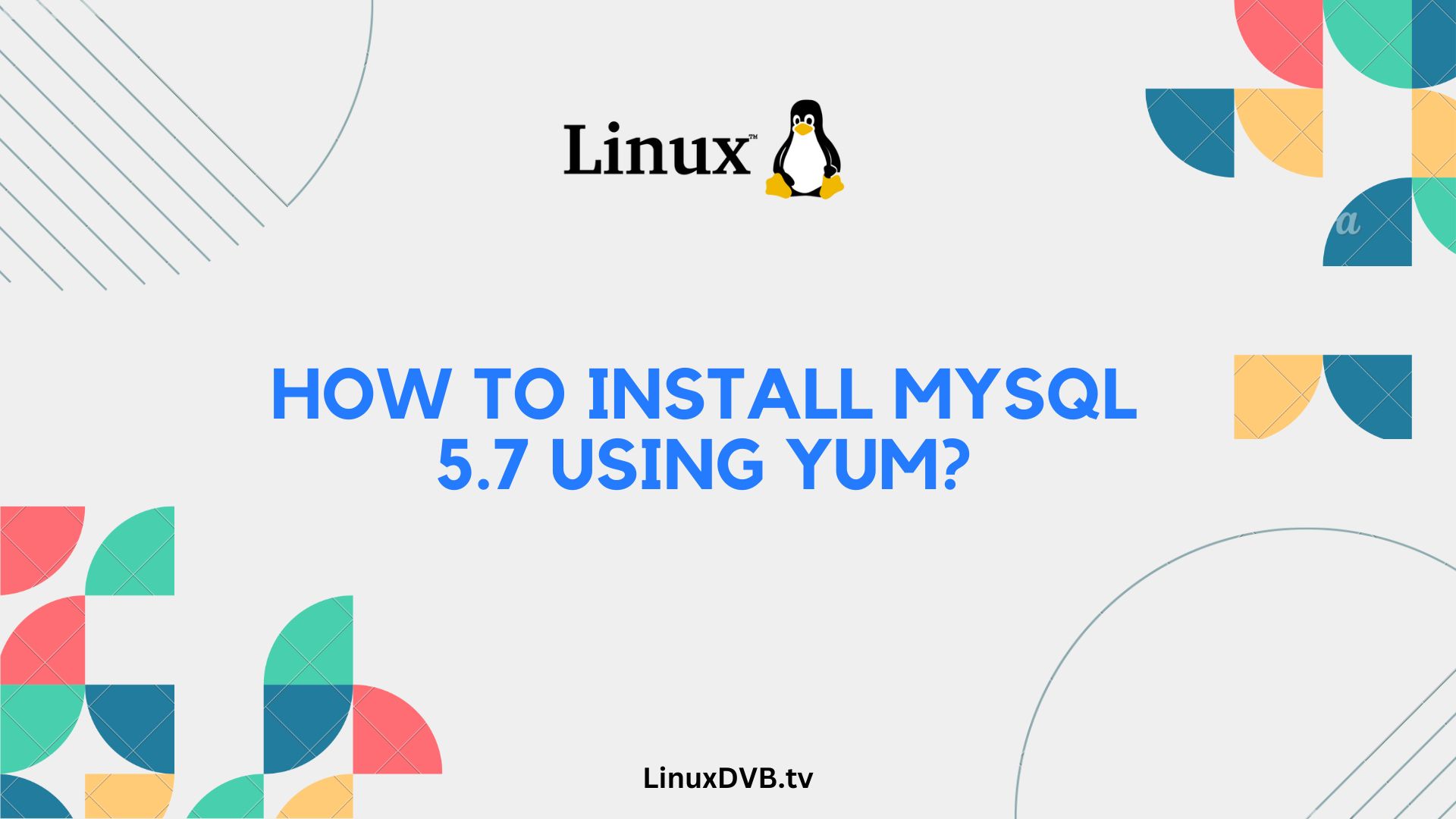Introduction:
Welcome to the comprehensive guide on installing MySQL 5.7 using yum. MySQL is a popular open-source relational database management system, and version 5.7 comes with several improvements and features. Whether you’re a developer, system administrator, or someone exploring MySQL, this guide will walk you through the installation process in a clear and concise manner.
Table of Contents
How to Install My Sql 5.7 Using Yum?
MySQL 5.7 is a versatile and reliable database system that you can easily install using the yum package manager on various Linux distributions. Follow these steps to get it up and running on your system.
Understanding MySQL 5.7:
Before diving into the installation process, it’s essential to understand the key features and benefits of MySQL 5.7. This version brings improved performance, security enhancements, and better compatibility with various applications.
Prerequisites:
To ensure a successful installation, make sure you have the necessary prerequisites in place. We’ll cover the required components and configurations in this section.
Step-by-Step Installation:
This section will guide you through the step-by-step installation process of MySQL 5.7 using yum. We’ll break it down into smaller, manageable steps for a smoother experience.
- Update Your System: Before installing MySQL, it’s crucial to update your Linux system to the latest packages and security patches. We’ll show you how to do this.
- Install MySQL 5.7 Repo: To install MySQL 5.7, you need to add the official MySQL repository to your system. We’ll provide you with the commands and instructions to do this.
- Install MySQL 5.7: Once the repository is added, we’ll guide you through the actual installation of MySQL 5.7 using the yum package manager.
- Start and Enable MySQL: After installation, you’ll need to start the MySQL service and configure it to start automatically on boot. We’ll explain how to do this efficiently.
Configuring MySQL:
MySQL requires some initial configuration to enhance security and set a root password. We’ll cover these important steps in this section.
- Setting Password: Learn how to set a secure password for the MySQL root user to protect your database.
- Securing MySQL: MySQL comes with a security script that can help you further secure your installation. We’ll walk you through running this script.
Verifying Installation:
To ensure everything is working correctly, we’ll show you how to verify your MySQL 5.7 installation. This step is essential for confirming that your database is up and running smoothly.
Troubleshooting:
Even with careful installation, issues can sometimes arise. In this section, we’ll address common errors and provide solutions to help you overcome any challenges.
Common Errors:
Explore some common errors users encounter during MySQL installation and how to troubleshoot them effectively.
FAQs:
Here are some frequently asked questions about installing MySQL 5.7 using yum:
How can I uninstall MySQL 5.7 using yum?
You can uninstall MySQL 5.7 using the command yum remove mysql57-server.
What should I do if I forget my MySQL root password?
You can reset the MySQL root password by following the official MySQL documentation on password recovery.
Can I install MySQL 5.7 on Windows?
Yes, you can install MySQL 5.7 on Windows by downloading the Windows installer from the MySQL website and following the installation instructions.
How to install MySQL 5.7 using yum?
You can install MySQL 5.7 using yum with the command yum install mysql57-server.
How to install MySQL 5.7 on Linux 7?
To install MySQL 5.7 on Linux 7, you can use the yum package manager with the command yum install mysql57-server.
How do I upgrade from a previous MySQL version to 5.7?
You can upgrade from a previous MySQL version to 5.7 by following the MySQL documentation for the specific upgrade path.
What are the system requirements for MySQL 5.7?
The system requirements for MySQL 5.7 can be found in the official MySQL documentation.
Is it possible to install multiple MySQL versions on the same server?
Yes, it is possible to install multiple MySQL versions on the same server by configuring them to use different ports and data directories.
Conclusion:
In conclusion, installing MySQL 5.7 using yum is a straightforward process when you follow the steps outlined in this guide. With MySQL 5.7, you’ll have a robust and efficient database system at your disposal for your projects. Don’t hesitate to explore more about MySQL and unlock its full potential.

